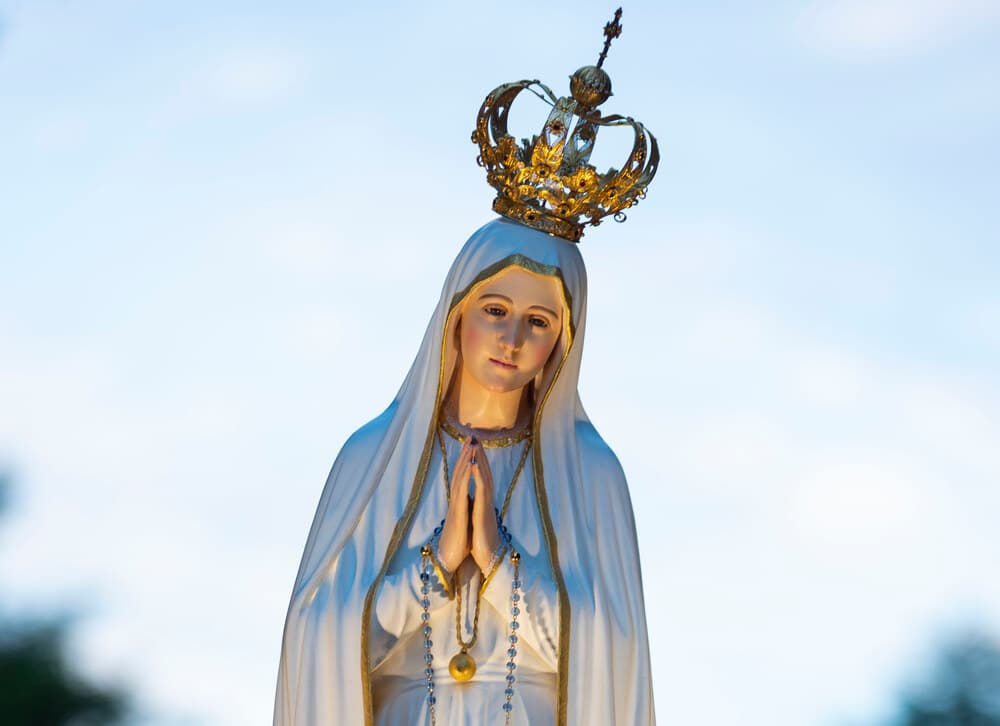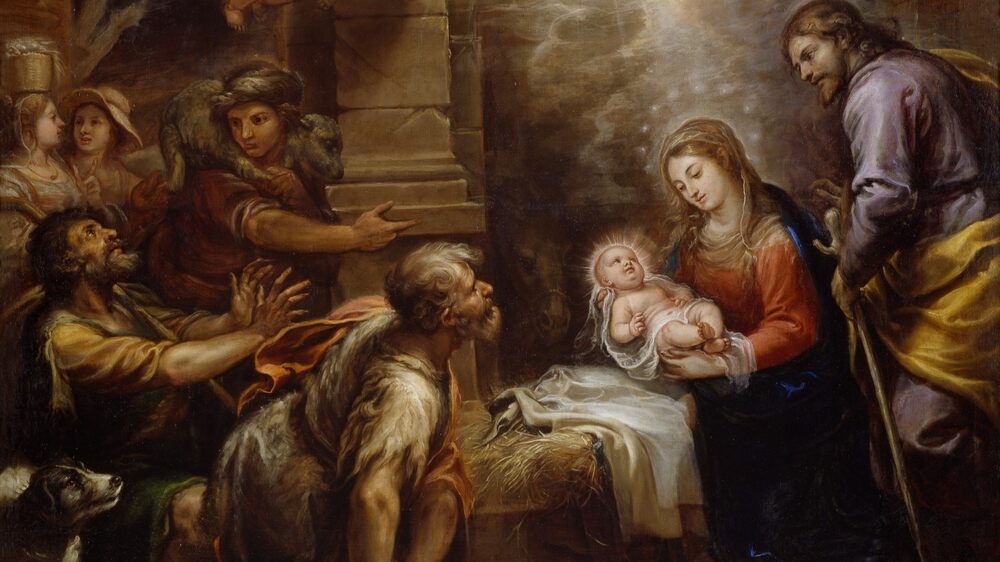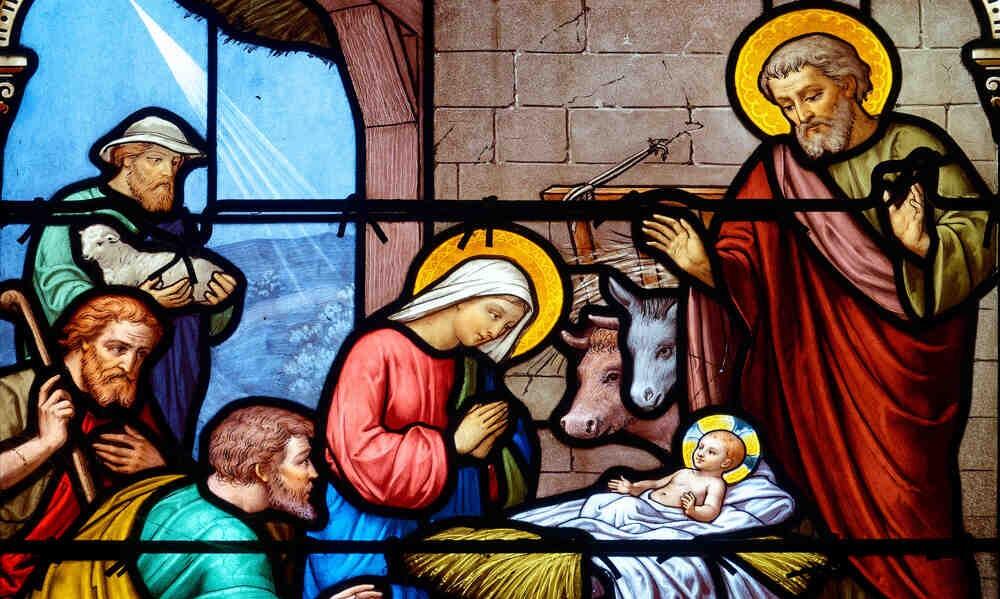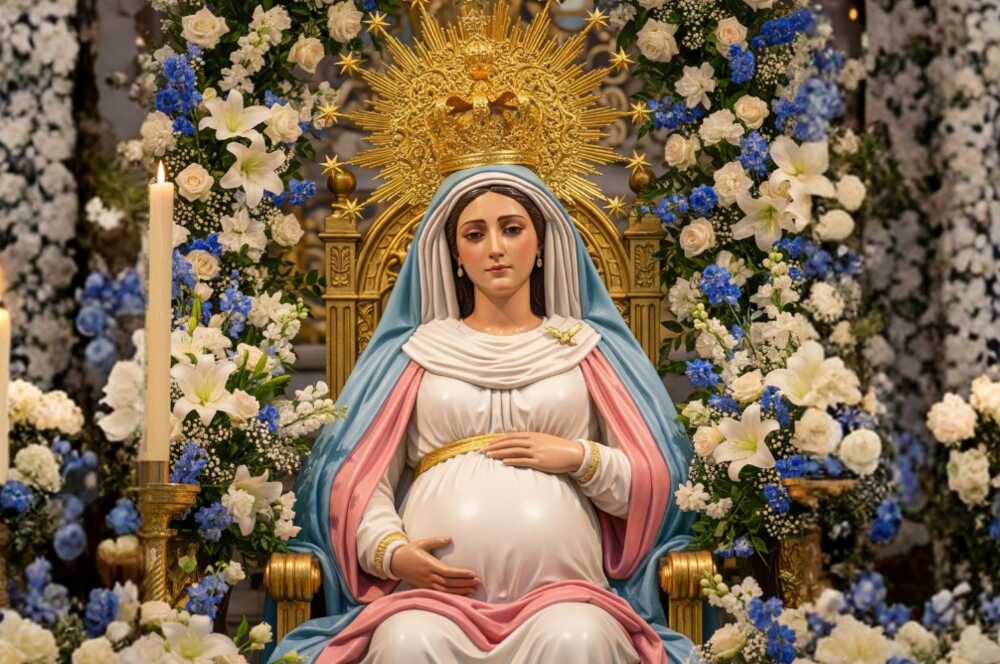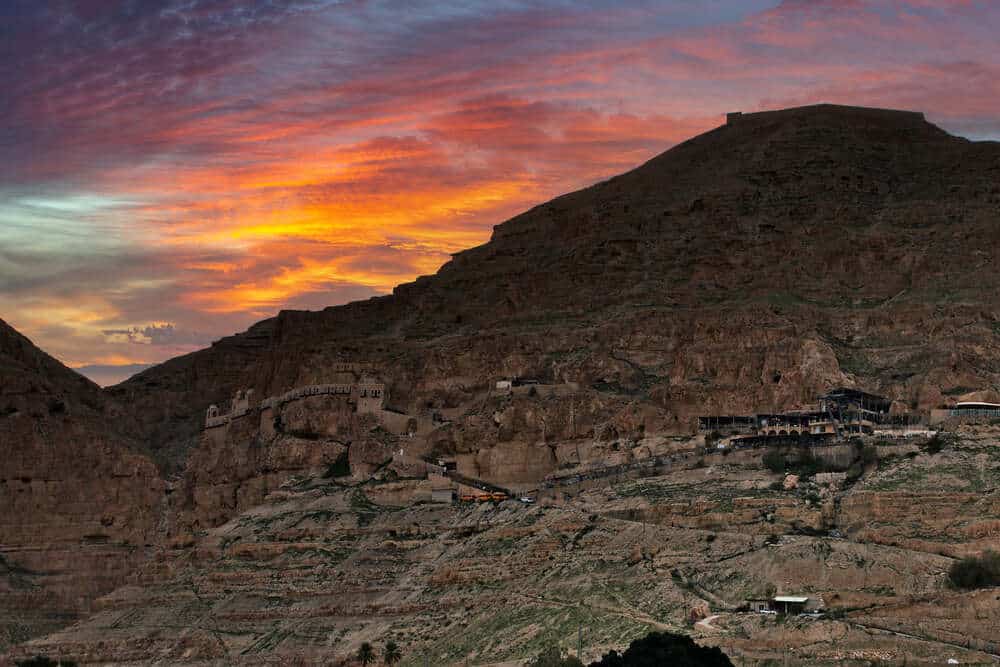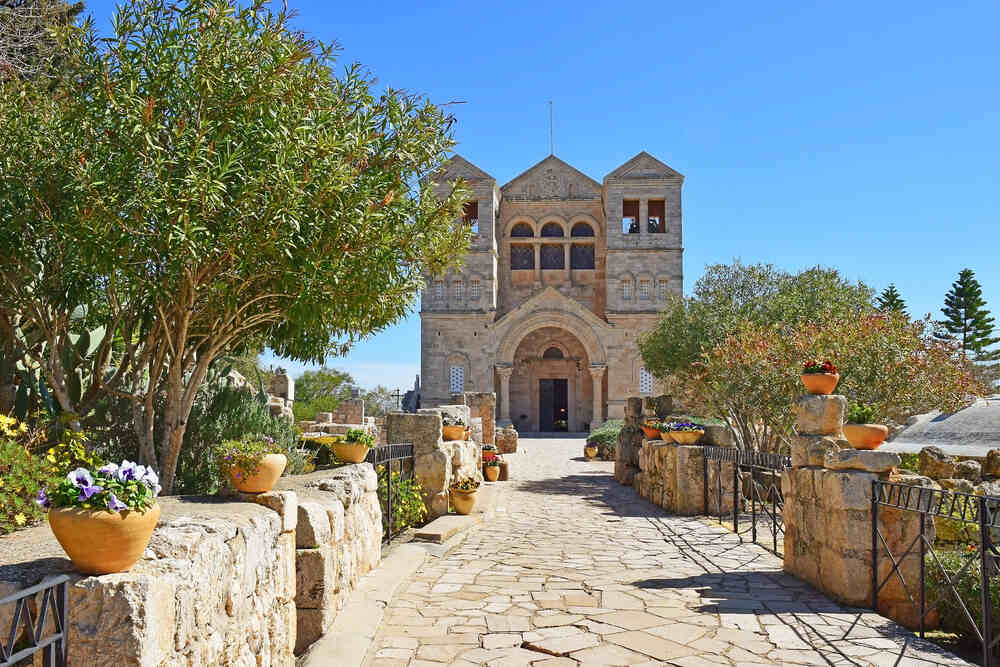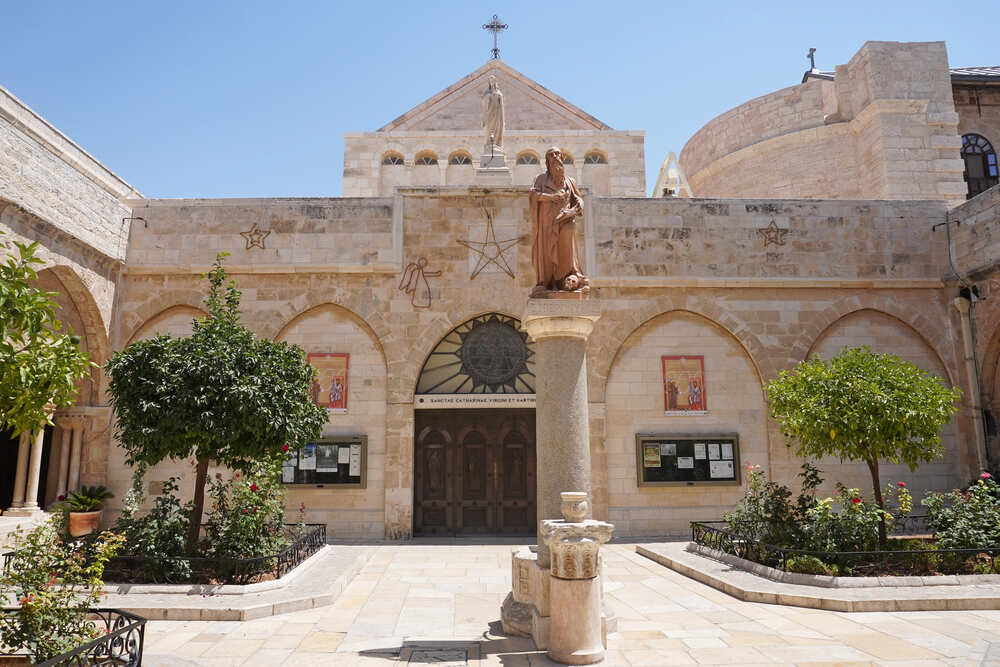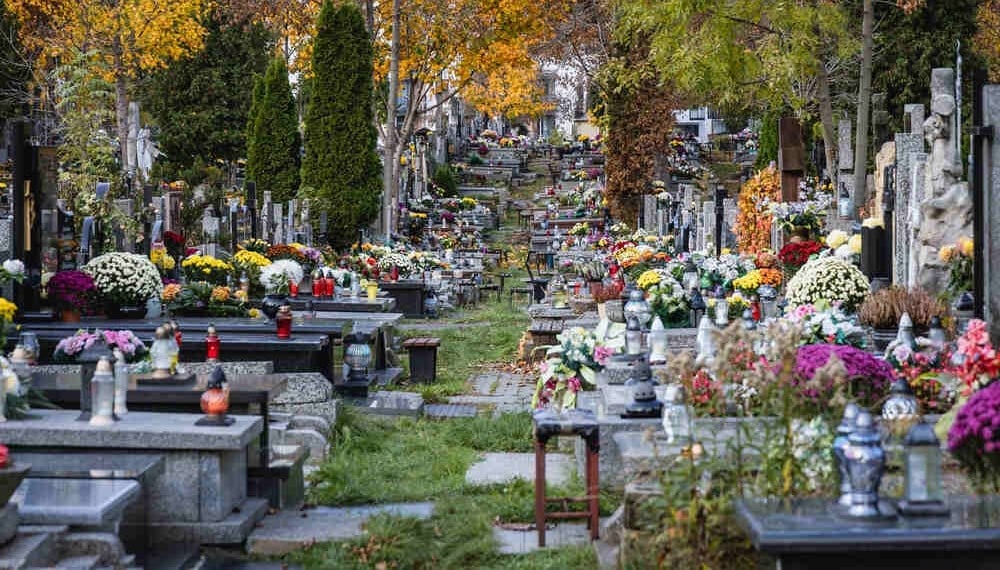Editor’s note: The following is adapted from a Mariology course given by Dr. Mark Miravalle at Ave Maria University, Florida, and a chapter of his book Introduction to Mary.
Dr. Mark Miravalle, permanent deacon and father of eight, is the Constance Schifflin Blum Chair of Mariology at Ave Maria University and the Saint John Paul II Chair of Mariology at Franciscan University of Steubenville. He is also the founder and senior editor of Ecce Mater Tua, an international journal of Mariology research, and president of the International Marian Association. A renowned speaker on Mariology, he has addressed numerous episcopal conferences, assisted bishops with apparition investigations, and written and edited over 20 books in Mariology and Spiritual Theology.
You can use the Catholic Mass Times app to find the nearest Catholic church with Mass, Confession, and Adoration schedules. It will surely help you! Download it now.
In the providence of God, there are moments in history when heaven directly intervenes to guide, warn, and call humanity back to fidelity. Fatima is such a moment. Among all approved Marian apparitions of the modern era, Fatima holds a place of preeminence. In fact, every authentic Marian message after Fatima serves, in some way, to fulfill the mission of Fatima—the triumph of the Immaculate Heart of Mary.
The events at Fatima, which took place between May and October of 1917, constitute a profound invitation from the Mother of God to participate in the work of redemption through prayer, penance, and reparation. They also provide us with a prophetic lens to understand the spiritual crisis of the modern world.
The Apparitions and the Angelic Preparation
The Fatima apparitions began in a deeply sacramental context. In 1916, the Angel of Peace prepared the children for the coming of Our Lady by teaching them prayers focused on Eucharistic reparation. One of the most striking was the following:
“Most Holy Trinity, Father, Son and Holy Spirit, I adore You profoundly, and I offer You the most precious Body, Blood, Soul and Divinity of Jesus Christ, present in all the tabernacles of the world, in reparation for the outrages, sacrileges and indifference with which He Himself is offended. And, through the infinite merits of His most Sacred Heart, and the Immaculate Heart of Mary, I beg of You the conversion of poor sinners.”
This prayer, taught while the angel held a bleeding Host over a chalice, pointed directly to the Real Presence and set the stage for the deeper message of reparation that Our Lady would bring. The children were struck with awe and reverence, often prostrating themselves for hours in prayer.
This Angel of Peace, later understood to be the Guardian Angel of Portugal, taught them profound prayers of Eucharistic adoration and reparation. The angel’s catechesis centered on the Real Presence of Jesus in the Eucharist and the call to offer sacrifices for the conversion of sinners.
These preparatory apparitions were not peripheral. They were foundational. They formed the children into souls capable of receiving and transmitting a heavenly message. We are reminded here that authentic Marian devotion is inseparable from a deep Eucharistic faith and a life of reparation.
Our Lady’s Apparitions
When Our Lady appeared in 1917, she came as “Our Lady of the Rosary”—a title she declared in the final apparition—and she immediately emphasized the daily Rosary. On May 13, her first message to the children was:
“Pray the Rosary every day to obtain peace for the world and the end of the war.”
This command was repeated in each of the six apparitions, underscoring the Rosary’s centrality to the Fatima message.
Thousands began gathering at the Cova da Iria for the monthly apparitions. Despite harsh opposition from both government and clergy, the crowds only grew.
On October 13, over 70,000 people witnessed the promised Miracle of the Sun—an unprecedented phenomenon where the sun seemed to dance, spin, and emit colored rays before plunging toward the earth, then returning to its place. Even secular newspapers confirmed the event. This miracle, foretold by Our Lady months in advance, was a public divine confirmation of the truth of the apparitions.
The July 13 Apparition: The Core of the Message
While each of the six Marian apparitions in 1917 carries weight, the July 13 message is the theological and prophetic heart of Fatima. It contains what we call the “three secrets” of Fatima, although in truth they were given in a single vision.
First Secret: the Vision of Hell
The children were shown a sea of fire filled with demons and lost souls. This terrifying vision was not meant to drive us to despair, but to awaken the urgency of conversion. Immediately after the vision, Our Lady said,
“You have seen hell, where the souls of poor sinners go. To save them, God wishes to establish in the world devotion to my Immaculate Heart.”
This is key: devotion to the Immaculate Heart is God’s ordained means to prevent the eternal loss of souls. The vision of hell was not the end of the message—it was the beginning of mercy.
Second Secret: the Prophecy and the Remedy
Our Lady then prophesied the outbreak of another war worse than World War I if mankind did not cease offending God. She warned of the spread of Russia’s errors, particularly atheistic materialism, throughout the world. But heaven also gave the remedy: the consecration of Russia to her Immaculate Heart and the Five First Saturdays devotion.
If her requests were heeded, there would be peace. If not, wars and persecutions would follow. Yet she promised with maternal certainty:
“In the end, my Immaculate Heart will triumph.”
Third Secret: the Vision of the Suffering Church
This was the final part of the July 13 vision, kept secret until the year 2000. It presents a symbolic vision of a pope—“a bishop dressed in white”—climbing a mountain of suffering and ultimately being martyred along with many bishops, priests, religious, and laity. The scene concludes with angels collecting the blood of the martyrs and offering it to God.
As Cardinal Ratzinger explained, this third part is not a deterministic prophecy but a call to conversion. It reminds us that the Church, like her Lord, must pass through Calvary to reach Resurrection. The third secret is not the end of Fatima’s message but the necessary context for our participation in its mission.
The Five First Saturdays Devotion
In 1925, Our Lady and the Child Jesus appeared to Sister Lucia and requested the Five First Saturdays devotion. This consists of:
- Confession
- Communion
- Recitation of the Rosary
- Fifteen minutes of meditation on the mysteries of the Rosary
All these must be done on the first Saturday of five consecutive months, to make reparation to the Immaculate Heart of Mary.
Jesus later revealed to Lucia that this reparation corresponds to five types of offenses committed against Our Lady:
- Denial of her Immaculate Conception
- Denial of her perpetual virginity
- Denial of her divine maternity
- Insults against her images
- The corruption of children who are led away from Her
This devotion is profoundly Eucharistic. It unites us with the Heart of Jesus through the Heart of Mary and prepares us for the grace of final perseverance.
-
- You may be interested in: What is the First Saturday Devotion?
The Consecration of Russia and the Triumph of the Immaculate Heart
The global and ecclesial weight of the Fatima message is confirmed by the testimony of recent popes
Pope Paul VI visited Fatima in 1967, fifty years after the apparitions, and affirmed its enduring call to penance and prayer.
Pope John Paul II had a particularly profound connection to Fatima. After surviving the assassination attempt on May 13, 1981—the very anniversary of the first apparition—he credited Our Lady of Fatima with saving his life. He later placed the bullet from that attempt in the crown of the original statue of Our Lady of Fatima in Portugal.
The request for the consecration of Russia is one of the most discussed elements of the Fatima message. Our Lady asked that the Holy Father, in union with the bishops of the world, consecrate Russia to her Immaculate Heart. While there were many attempts, it was not until 1984 that Pope John Paul II, in union with the bishops, offered this act of consecration. Sister Lucia later confirmed that this fulfilled Our Lady’s request.
Yet the Triumph of the Immaculate Heart is not a one-time event but a gradual unfolding. It involves the conversion of hearts, the renewal of Christian life, and the return of nations to God. Our Lady’s promise—“In the end, my Immaculate Heart will triumph”—invites us into a living hope rooted in divine mercy and maternal intercession.
At the same time, her triumph is not yet complete. Sister Lucia described the Fatima message as a kind of “week,” with the 1984 consecration marking the start of the “third day.” Four more “days” remain. The fulfillment of her promise depends on our response, primarily through living a daily conversion of the heart and the widespread practice of the devotion of the Five First Saturdays.
Mary as Co-Redemptrix and Mediatrix
At the heart of the Fatima message is a Marian theology deeply embedded in Scripture and Tradition. Mary is not merely a messenger; she is a participant in the work of redemption. Her role as Coredemptrix—one who suffers with and under Christ for the redemption of the world—is revealed implicitly in Fatima.
Her Immaculate Heart is wounded by the sins of humanity, yet she offers it in love. She invites us to console her heart and cooperate in the redemption of others by our prayers and sacrifices. This is the essence of Christian co-redemption.
Fatima Today
Some may be tempted to think Fatima is a message for the past. On the contrary, its urgency has only grown. The rejection of God, the spread of moral confusion, the breakdown of family, and threats to peace all call for a renewed embrace of Fatima’s message.
Fatima is not a private devotion—it is a prophetic call from heaven. It is an ecclesial message that the entire Church must receive and respond to. The daily Rosary, Eucharistic adoration, penance, reparation, and Marian consecration are not optional extras. They are heaven’s strategy for the triumph of mercy.
Conclusion
The world will not know peace until it turns to the Immaculate Heart of Mary. This is not merely poetic—it is theological. In God’s providence, He has entrusted peace to the maternal heart of the one who first bore the Prince of Peace.
Responding to Fatima means taking our place in the Church’s Marian mission. It means suffering with Mary for the salvation of souls. It means believing that her promise is sure: “In the end, my Immaculate Heart will triumph.”
Let us then heed her call with generous hearts. Let us consecrate ourselves and our families. Let us embrace the First Saturdays. Let us live the Rosary. And let us trust, with holy confidence, in the triumph that has already begun.

